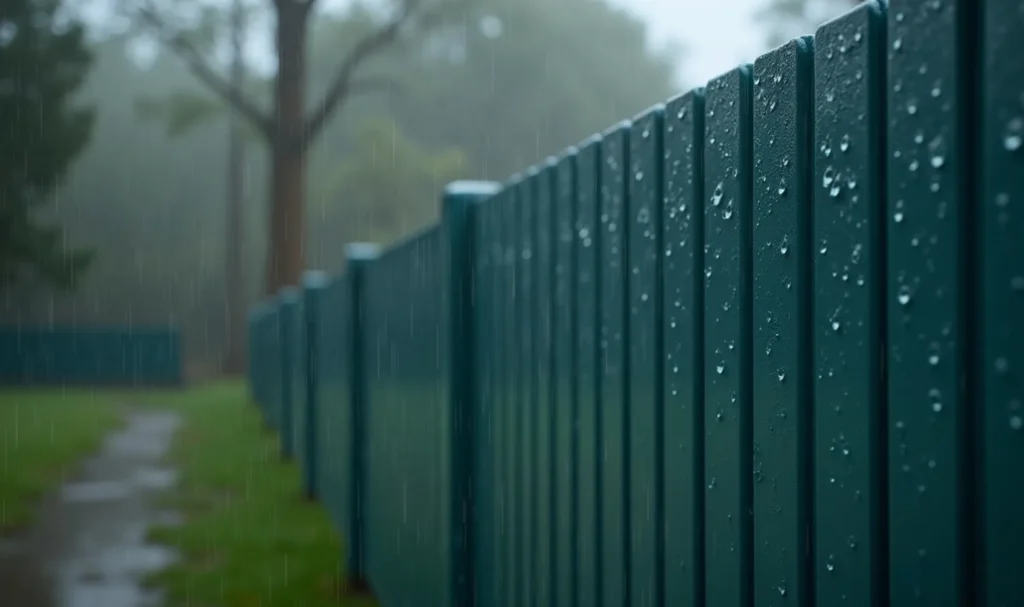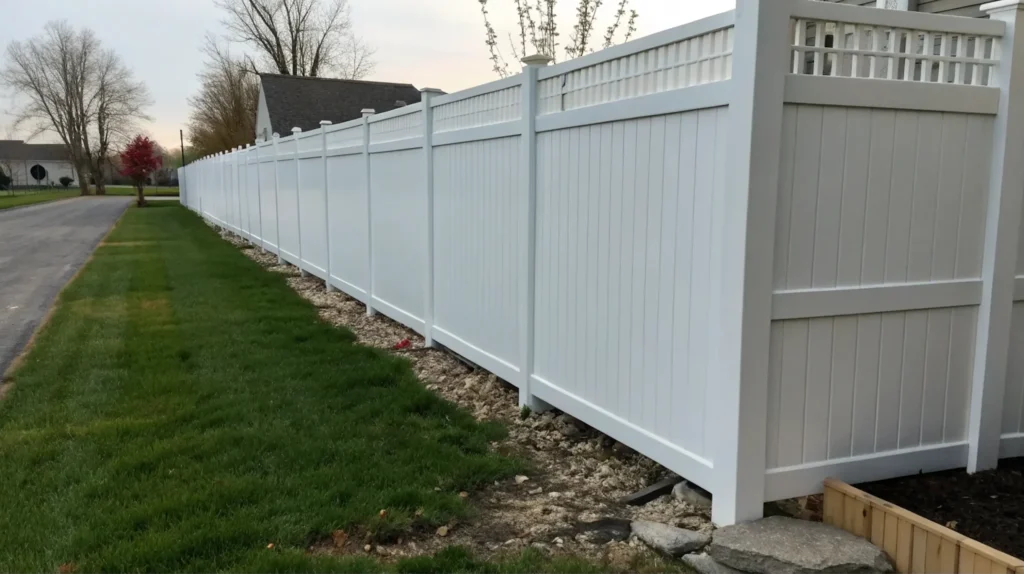Introduction to Vinyl Fencing
Vinyl fencing has become a popular choice for homeowners looking to add both style and durability to their properties. Whether you're aiming for privacy, security, or simply to beautify your outdoor space, vinyl fencing offers a range of styles and benefits. Today, we'll delve into what vinyl fencing is and explore how to clean and care for it to maintain its stunning appearance.
What is Vinyl Fencing?
Vinyl fencing is made from polyvinyl chloride (PVC), a type of plastic that combines durability with flexibility. Unlike traditional wood fences, vinyl fencing does not warp or rot, making it a long-lasting option for homeowners who want a low-maintenance barrier. Vinyl fences come in various styles, colors, and heights, providing ample options to suit various tastes and needs. This versatility makes them an appealing choice for many property owners.
Types of Vinyl Fencing
When considering vinyl fencing, it's important to understand the different types available.
Privacy Fencing
Privacy fences are tall structures designed to block visibility from neighbors, providing a secluded outdoor space. Typical heights for these fences can reach up to six feet or more, ensuring your backyard oasis remains private.
Picket Fencing
Picket fences offer a charming, classic look perfect for homes in suburban neighborhoods. They're generally shorter and are often used for decorative purposes, marking property boundaries without obstructing views.
Ranch Rail Fencing
Ranch rail fences, characterized by their horizontal rails, serve a dual purpose: they can outline your property while giving it a rustic aesthetic. These are popular for larger areas like farms or estates.
Benefits of Vinyl Fencing
Investing in vinyl fencing comes with numerous advantages that make it a desirable option for many homeowners.
Durability and Maintenance
Vinyl fences are incredibly durable and require minimal maintenance. Unlike wood, which can succumb to rot, insect damage, or weathering, vinyl fences maintain their appearance for years with little more than occasional cleaning. They do not need painting, sealing, or staining, which saves time and money.
Aesthetic Appeal
Available in various colors and textures, vinyl fencing can complement any home design. Whether you prefer the look of classic white picket fences or want something more modern, you'll find a vinyl option that suits your taste.
Environmental Benefits
Vinyl fencing is a greener option than many other materials. It can often be recycled and doesn’t contribute to deforestation. Brands that focus on sustainability tend to produce vinyl that’s made from recycled materials, making it an eco-friendly choice.
Installation of Vinyl Fencing
The installation process is crucial in ensuring your vinyl fence stands the test of time.
Preparing Your Yard for Installation
Before installing vinyl fencing, it's important to survey the area where you want it placed. Clearing the space of debris, marking the layout, and understanding local regulations can save a lot of headaches later.
DIY vs. Professional Installation
While DIY installation can be cost-effective, consider hiring professionals for more complex setups or if you're unsure about local regulations. Professionals have the experience and tools necessary to ensure your fence is installed correctly.
Vinyl Fencing and Local Codes
It's essential to understand local zoning laws before installing any fencing.
Understanding Building Regulations
Most municipalities have restrictions regarding fence height and placement. Checking with your local zoning office to understand these regulations will prevent potential fines or the need to remove improperly installed fences.
Getting the Necessary Permits
Permits are often required for fence installation, especially when it exceeds certain heights. Your local government can guide you through the process of acquiring the necessary documents.
Maintaining Your Vinyl Fence
Proper maintenance is key to ensuring your fence lasts and looks great.
Regular Cleaning Procedures
Routine cleaning can prevent stains and mildew buildup. Simply rinsing the fence with a hose can often suffice. In dirtier conditions, using a mixture of soap and water will keep your fence looking fresh.
Tools You Will Need
A soft-bristle brush, a hose, soap, and water are typically all you need to clean your vinyl fence effectively. For tougher spots, a pressure washer can help, but it's important to use it carefully to avoid damage.
How to Clean and Care for Your Vinyl Fence
Cleaning your vinyl fence doesn’t have to be a daunting chore.
Step-by-Step Cleaning Guide
- Assess the Condition: Check for any discoloration or stains.
- Prepare Cleaning Solution: Mix soap with warm water or use a commercial vinyl cleaning product.
- Scrub: Using a soft-bristle brush, scrub the stained or dirty areas gently.
- Rinse Off: Use a hose or pressure washer (on low settings) to rinse away soap and dirt.
Dealing with Tough Stains
For tougher stains, like grease or mildew, consider using baking soda, vinegar, or specialized cleaners designed for vinyl. Apply the cleaner, let it sit for a few minutes, then scrub and rinse.
Protecting Your Vinyl Fence from Damage
While vinyl is highly durable, certain precautions can ensure it stays in top shape.
Weather-Related Concerns
Extreme heat can cause vinyl to warp, while freezing temperatures can make it brittle. If you live in an area known for harsh weather, consider installing a fence that’s specifically designed for your climate.
Pest Prevention
While pests are less likely to damage vinyl than wood, it's still important to inspect your fence regularly for any signs of damage or infestation.
Cost of Vinyl Fencing
Understanding the necessary investment for vinyl fencing can help you budget accordingly.
Comparing Costs with Other Materials
Compared to wood, vinyl fencing may have a higher upfront cost, but its low-maintenance aspect offers significant savings in the long run. Additionally, its longevity means you won't need frequent replacements like wood.
Long-term Value of Vinyl Fencing
Though vinyl might cost more initially, its durability, maintenance ease, and lifespan often make it a wise investment that pays off over time.
Conclusion
Vinyl fencing is a fantastic solution for many homeowners looking for durability, low maintenance, and aesthetic appeal. With the knowledge of how to clean and maintain your vinyl fence, you’ll ensure that it stays beautiful for years to come. Remember to consider local regulations before installation and to regularly clean your fence to keep it looking new.
Frequently Asked Questions
How long does vinyl fencing last?
Vinyl fencing can last over 20-30 years or more with proper care and maintenance.
Can vinyl fencing be painted?
While vinyl can technically be painted, it’s generally unnecessary since they come in a variety of colors and finishes.
Is vinyl fencing safe for pets?
Yes, vinyl fencing is a solid choice for pet owners as it is strong and does not have sharp edges.
What is the best way to remove stains from vinyl fencing?
Using a mixture of soap and water along with a soft brush works effectively to remove stains. For tougher stains, consider using specific vinyl cleaners.
Does vinyl fencing fade in the sun?
High-quality vinyl typically resists fading, but some lower-quality options may lose color over time.
How can I find a good contractor for vinyl fencing?
Seek recommendations from friends, check reviews online, and ensure they are licensed and insured before hiring a contractor.
By understanding the ins-and-outs of vinyl fencing, you'll not only make an informed choice when buying but also maintain your fence, adding long-lasting appeal and value to your home.



